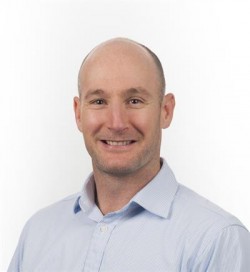Dr Williams is an Associate Professor of Musculoskeletal Physiotherapy and Deputy Head of Department for Rehabilitation and Sport Science. He leads a programme of research work at the interface of Physiotherapy and Biomechanics with a focus on clinical, rehabilitation and sporting contexts. The research aims to provide insights to prevention, treatment, and rehabilitation with a strong emphasis on the use of miniature body worn sensors. Dr Williams has a growing reputation as a thought leader in the application of sensors for human movement analysis, especially for the spine, and has good national and international collaborations.
He received his BSc (hons) in Physiotherapy from the University of Southampton, Master of Manipulative Therapy degree from Curtin University of Technology, Western Australia and Doctor of Philosophy from the University of Roehampton, London. He has held positions in the University of Brighton and visiting research fellowships within the engineering department of Cardiff University and School of Healthcare Studies, University of Southampton. Dr Williams has published over 65 peer reviewed publications, has appeared in news articles around the world for his novel instrumentation and has worked with industrial partners on turning ideas into products. He has previously served as section editor for a BMC journal. He is nationally recognised as an expert Physiotherapist, previously delivering CPD training internationally, and he retains membership to the Health and Care Professions Council and the Musculoskeletal Association of Charted Physiotherapists.
He is keen to work with potential MRes, PhD and postdoctoral students with research interests aligned to clinical biomechanics, especially in projects related to (1) spinal biomechanics, (2) balance, especially wobble board and (3) CPR. See teaching tab for previous and current PhD topics.
Research
My current research is focussed on Biomechanics in Sport and Clinical Biomechanics.
Cricket Our research into cricket looks to investigate in field measurement of spinal motion and front foot impact as well as categorise playing surface properties. It is hoped the results will help inform safer playing recommendations and serve to assist in the understanding of these factors in the development of back pain.
Rugby Our research has captured spinal motion and muscle activity from real-live scrummaging. This novel techniques allows us to estimate the cervical loading as well as investigate the spinal kinematics experienced by the front row.
Clinical A novel measurement solution has been created to investigate the regional breakdown of spinal motion and the relationship between hip and spine. This quick and simple technique affords the clinician a wealth of information regarding movement behviour. It is hoped such methods will form part of an instrumented assessment for clinicians.
Our research aims to develop a novel method of measuring shoulder joint proprioception. This novel method will be used to explore the effects of pain and rehabilitation of shoulder joint proprioception with the aim of informing rehabilitation protocols.
Other areas of interest include the measurement of balance and impact.
Publications
Journal articles
Conferences
Grants
Grants
This page is a shortened version of a BU academic profile. To view the complete profile, visit our Staff Profiles site.
